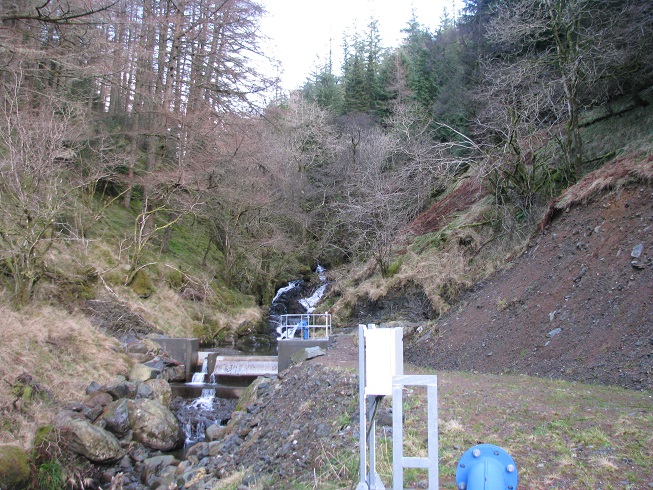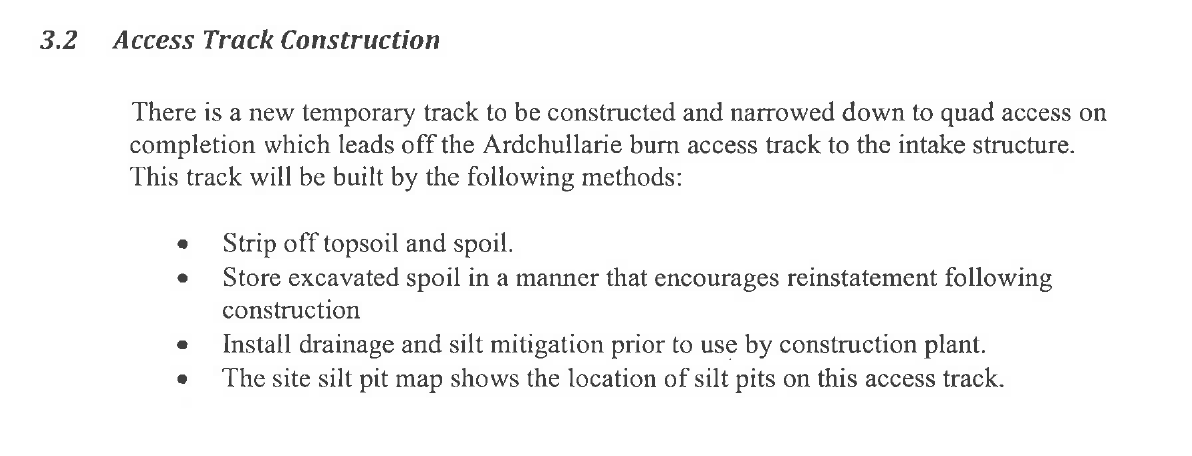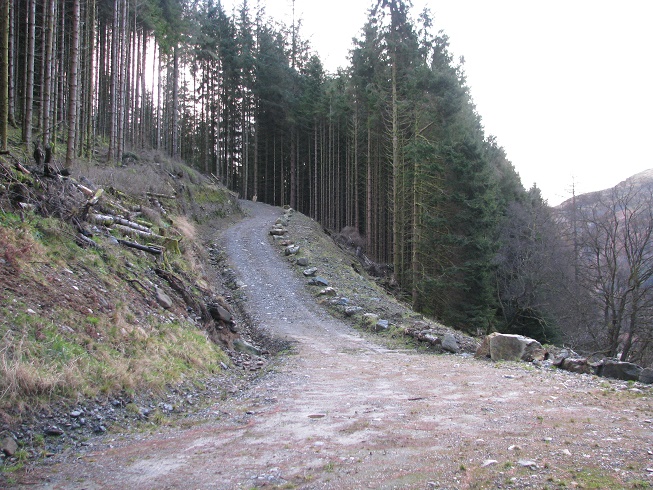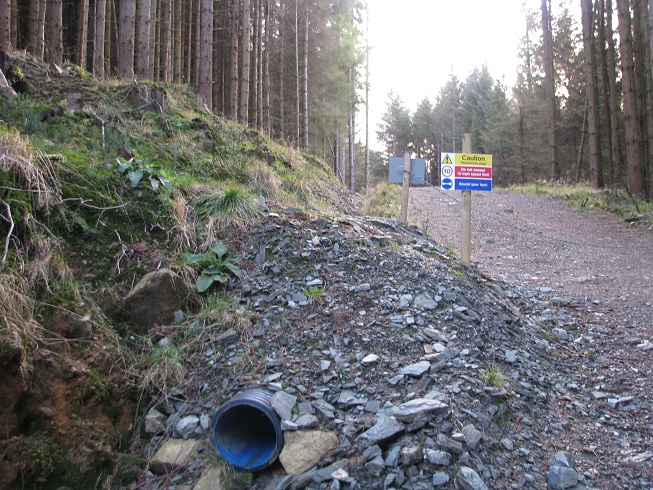
A few weeks ago Jane Meek sent me photos of the Ardchullarie hydro scheme. The Ardchullarie Burn runs parallel to the path popular with hillwalkers that leads into Glen Ample and Ben Vorlich from Loch Lubnaig. I checked the Loch Lomond and Trossachs National Park Authority planning portal to find out more about this scheme. A large number of documents, which the developer was required to submit by the Decision Notice which approved this scheme, were missing. This caused me, quite mistakenly, to wonder if the documents had for some reason been submitted to Stirling Council. In its response EIR 2017-003 Response Ardchullarie the LLTNPA has clarified that the documents were sent to them but also that it does NOT publish any planning information that it requires to be submitted to it as part of a Decision Notice:
 The claim that “Post Decision information is not published” is not true, as is shown in this case, where the LLTNPA did publish one piece of information (on the design of the pipe bridge), but also other cases where some information does appear post-decision. I find it hard to comprehend the thinking behind the decision to remove the one small piece of information in this case.
The claim that “Post Decision information is not published” is not true, as is shown in this case, where the LLTNPA did publish one piece of information (on the design of the pipe bridge), but also other cases where some information does appear post-decision. I find it hard to comprehend the thinking behind the decision to remove the one small piece of information in this case.

The Park’s explanation for its actions is that unless it is legally required to make information public, it won’t do so. I find this shocking. Our National Parks should be demonstrating best practice but instead appear to be trying to cover up what they are doing (see here for lack of openness in Cairngorms National Park). The only reason for the Park not to publish information about the implementation of planning decisions is to make life as difficult as possible for people who want to monitor them and to cover up what is actually happening.
Why its important to know what is in planning documents is illustrated by the Construction Method Statement EIR 2017-003 Ardchullarie Appendix A which the Developer was required to submit as part of the Decision Notice. Here is an example:

The access track has clearly not been restored to quadbike width. What is the Park doing about this? Does the Park really believe that placing a line of boulders down the middle of the construction track, to demarcate what is track and what is “restored”, demonstrates good practice for hill tracks in our National Parks? If the information was public, we might know the answers to these questions.

Ardchullarie is a very small hydro scheme and being in woodland, its landscape impact is at present limited – limited until that woodland is felled. However, it illustrates some of the fundamental problems at present with how our planning system operates in our National Parks.
The fundamental problem is that, while as in the Ardchullarie scheme the Report on the planning application may be very thorough 2013_0151_DET-Delegated_report_final-100102989 Ardchullarie, the approval in effect is for an outline plan which then requires further documents to be submitted. In a significant number of cases, the required documents are not submitted or approved before work commences. If the Planning Authority does not publish all these documents, the public simply don’t know if planning requirements are being met and indeed cannot report breaches of planning permission (including works commencing before the Planning Authority is notified). So, any Planning Authority which is committed to operating a planning system which is open, transparent and effective should be publishing all the documents it requires developers to submit as a consequence of Decision Notices. The LLTNPA is saying they won’t publish any. That speaks for itself.
This issue is not just about the Construction Method Statement which I obtained via FOI (and which you can read above). There were 21 Conditions attached to the Decision Notice (I must commend the Park officer for their thoroughness in this case) and what the Park is saying is it won’t publish as a matter of course ANY information about the implementation of ANY of those conditions. So, documents you or I might want to see that help explain the photos above include those required to illustrate “finishing materials and colours of all above ground structures” and the Landscape Restoration Plan (which was separate to the Construction Method Statement). The only way to get those is through constant FOIs, where the Park then takes weeks to respond.
It would be interesting to know if the decision to make none of this information public and to operate in such an obstructive way came from the Board or is a staff decision. I wonder too whether this has been approved by the Information Commissioner.
What needs to happen
- The LLTNPA and Cairngorms National Park Authority should commit to making public, as soon as they are provided, all documents submitted to them as part of planning decisions and also to publish the National Park’s response to these (eg correspondence if they are not adequate)
- The Scottish Government should require – it could make a commitment to do this following the current consultation on its planning white paper – all planning authorities to publish Post Decision planning information on their planning portals.
- I would like the Information Commission to include in their guidance on publications schemes, that Planning Authorities should be publishing post Decision Notice information relating to that Notice. Unfortunately, the Information Commissioner does not have the powers to force the National Park to do this.

1 Comment on “Openness and transparency in planning – the Ardchullarie hydro scheme”